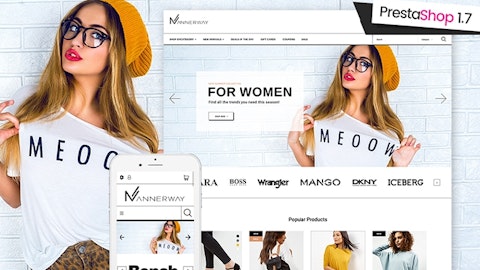Joey Zwillinger: Thanks, Tom. So, when we have the kind of fresh product assortment coming, and particularly if we’re using promotion less as a lever, price as less of a lever, we are going to want to spend on marketing and invest behind strength. What we want to do is focus that on the core franchises so that we continue to build a lot of equity around those core models, and that’s the work we’re embarking on. So, that is one element that we’ll look at in 2024 and beyond. I would say that another key factor for you to consider is the model still, over the coming years, will be intended to drive leverage on marketing as a percent of sales. And a large part of that is about the channel mix in the business. So, as we shift to international from direct to distributors, that’s a much more significant leverage because we don’t support those markets with marketing dollars anymore, and similarly, on the wholesale side, just has a much smaller marketing spend as a percent of the overall sales.
So, that’s one aspect of driving leverage in the long term. And then, finally, I’ll just say that our brand has tremendous amounts of affinity with our core consumer, and people do really love the brand. We’ve seen that in all the work we do consistently with consumers, mirrored by the NPS scores we collect and the fact that we found consistently that people have a very high degree of desire to come back and consider buying again from us. So, given that opportunity – given that it creates this opportunity where we do have opportunities to work with either people or brands that we can partner with in the future, and some of those opportunities, it’s hard to sometimes predict how well they come off, but some of them can be really catalytic. And given that we have such a differentiated offering to the marketplace and a differentiated message, we get to go in the doors with some pretty compelling opportunities and rest assured that we are working on those very regularly.
Operator: One moment for our next question. Our final question comes from Krista Zuber with TD Cowen. Your line is now open.
Krista Zuber: Hi. Thanks for taking our question. This is Krista on for John Kernan. Two questions. First, just a modeling question on the distributor economics. Just a clarification on the transition impact to revenues. I think you’re guiding to – I think it’s $2.5 million impact to revenues in Q4 for Canada and South Korea. Should that be the run rate we use for the next few quarters until we anniversary the transition? And should we expect the Australia/ New Zealand and Japan revenue impact to be roughly double than that since their representation of revenue is somewhat higher? And I have one follow-up. Thanks.
Annie Mitchell: Great. Thank you for the question. Really appreciate it. The impact for Canada and Korea in Q4 is very much related to it being the first full quarter that they are on the distributor model. So, no, we would not expect that to be the overall runway going forward. We do, as we get into 2024, plan on giving additional color and guidance for the full year related to how this is going to overall impact the business. When we think about sort of the way that we’re going to sell into these distributors, pricing will vary based on the exact quantity and mix. But directionally, a good way to think about the revenue per unit is that we’re going to sell in with a gross margin that’s naturally below both DTC and typical wholesale margins. And we do anticipate very strong flow-through to the bottom line based on the low operating expenses in this model. And therefore, we expect to generate contribution margins north of 20% with this new international model.
Krista Zuber: Okay. Great. And then, just sort of one philosophical question on sort of the margin profile long term. Just would love to get your thoughts on how you see the long-term gross margin and adjusted EBITDA margin potential within the construct of the execution of this transformation plan. Thank you.

